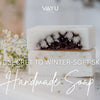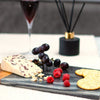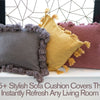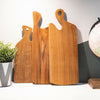What is the 3-3-3-3 Rule for Charcuterie Boards? The Simple Secret to a Perfect Party Platter

If you’ve ever admired a beautifully arranged charcuterie board at a gathering and wondered how to recreate that effortless abundance at home, you’re not alone. At Vayu Earth, we’re passionate about the art of entertaining—especially when it means bringing people together around handmade, sustainable pieces that tell a story. One of our favourite tricks for building a balanced, crowd-pleasing charcuterie board is the 3-3-3-3 rule.
But what exactly is the 3-3-3-3 rule for charcuterie boards, and why has it become the go-to formula for hosts and food lovers alike? Let’s dive in, explore how you can use this rule to create a show-stopping party platter, and discover why an artisan charcuterie board from Vayu Earth is the perfect foundation for your next gathering.
The 3-3-3-3 Rule Explained

The 3-3-3-3 rule is a simple, clever guideline for assembling a balanced and inviting charcuterie board. As described by LOCA Magazine, the rule encourages you to choose:
-
3 types of meat
-
3 types of cheese
-
3 types of starches (bread, crackers, or crisps)
-
3 types of accompaniments (think fruit, nuts, pickles, or spreads)
This formula ensures your cheese board or party platter has variety, balance, and visual appeal—without overwhelming you or your guests with too many choices.
Why the 3-3-3-3 Rule Works
If you’ve ever stood in front of a deli counter or cheese aisle, you’ll know how easy it is to get carried away. The 3-3-3-3 rule keeps things simple and focused, so you can create a charcuterie board that’s generous but not chaotic.
-
Variety: By including a mix of flavours and textures, you cater to different tastes and dietary preferences.
-
Balance: The rule encourages you to think about salty, sweet, crunchy, and creamy elements.
-
Visual appeal: A thoughtfully arranged board looks abundant and inviting, making it the star of any table.
-
No waste: You’re less likely to end up with leftovers that go uneaten.
How to Build a Charcuterie Board Using the 3-3-3-3 Rule

Let’s break down each element, with tips and ideas for making your board truly special.
1. Three Types of Meat
Start with a trio of cured or cooked meats. For a classic charcuterie board, you might choose:
-
Salami: Mild or spicy, sliced thin for easy nibbling.
-
Prosciutto or Parma ham: Delicate, salty, and perfect for draping.
-
Chorizo or coppa: For a bolder, more robust flavour.
For a vegetarian or vegan cheese board, swap meats for plant-based alternatives like marinated tofu, roasted peppers, or vegan deli slices.
2. Three Types of Cheese
A balanced cheese board should offer a variety of textures and strengths. Try:
-
A soft cheese: Brie, Camembert, or goat’s cheese.
-
A hard cheese: Mature Cheddar, Manchego, or Comté.
-
A blue cheese: Stilton, Roquefort, or Gorgonzola.
If you’re serving vegan guests, there are fantastic plant-based cheeses available—look for a creamy cashew cheese, a firm almond-based wedge, and a tangy blue-style vegan cheese.
3. Three Types of Starch
You’ll want something to pile all those delicious toppings on! Mix up your starches for interest:
-
Artisan bread: Baguette slices, sourdough, or rye.
-
Crackers: Choose a mix of seeded, wholegrain, and classic water biscuits.
-
Crisps or breadsticks: For extra crunch and a fun twist.
4. Three Types of Accompaniments
This is where you can get really creative. Accompaniments add pops of colour, sweetness, saltiness, and crunch. Try:
-
Fresh or dried fruit: Grapes, figs, apple slices, or dried apricots.
-
Nuts: Almonds, walnuts, or pistachios.
-
Pickles or olives: Cornichons, gherkins, or a bowl of mixed olives.
-
Spreads: Chutney, honey, or a sharp mustard.
Feel free to mix and match—just aim for three different types to keep things balanced.
Arranging Your Charcuterie Board

Start with a beautiful, sustainable base—like one of our artisan charcuterie boards from Vayu Earth. Place your cheeses first, spaced evenly around the board. Next, add your meats, folding or rolling them for texture. Fill in with bread, crackers, and crisps, then scatter your accompaniments in the gaps.
Don’t be afraid to let things spill over the edges or overlap—abundance is part of the charm! Garnish with fresh herbs or edible flowers for a final flourish.
Tips for a Stunning Cheese Board or Party Platter
-
Room temperature: Serve cheeses at room temperature for the best flavour.
-
Label your cheeses: Especially if you’re serving something unusual or strong.
-
Consider dietary needs: Offer a few vegetarian, vegan, or gluten-free options if needed.
-
Don’t forget the tools: Provide cheese knives, small forks, and napkins.
Why Choose an Artisan Charcuterie Board from Vayu Earth?

At Vayu Earth, our charcuterie boards are more than just serving pieces—they’re a celebration of craftsmanship, sustainability, and ethical production. Each board is handmade by skilled artisans using responsibly sourced wood, reflecting the unique stories and traditions of their makers. When you choose Vayu Earth, you’re not just buying a product; you’re supporting fair wages, safe working conditions, and a movement towards mindful, conscious living.
Explore our charcuterie board collection to find the perfect base for your next gathering.
Final Thoughts
The 3-3-3-3 rule for charcuterie boards is a brilliantly simple way to create a balanced, beautiful party platter every time. By focusing on three types each of meat, cheese, starch, and accompaniments, you’ll delight your guests and make entertaining a breeze.
Ready to build your own show-stopping cheese board? Start with an artisan board from Vayu Earth, and let your creativity (and your taste buds) do the rest.
When you choose Vayu Earth, you’re not just serving food—you’re serving a story of tradition, sustainability, and community. Happy entertaining!





